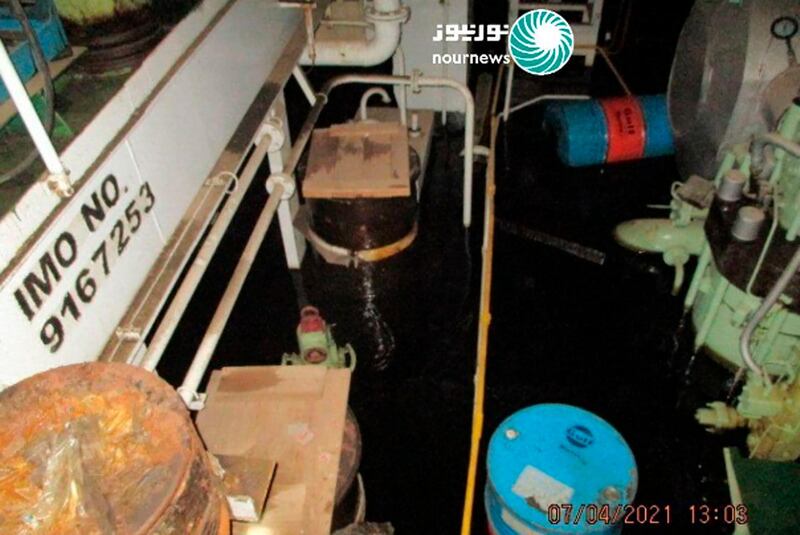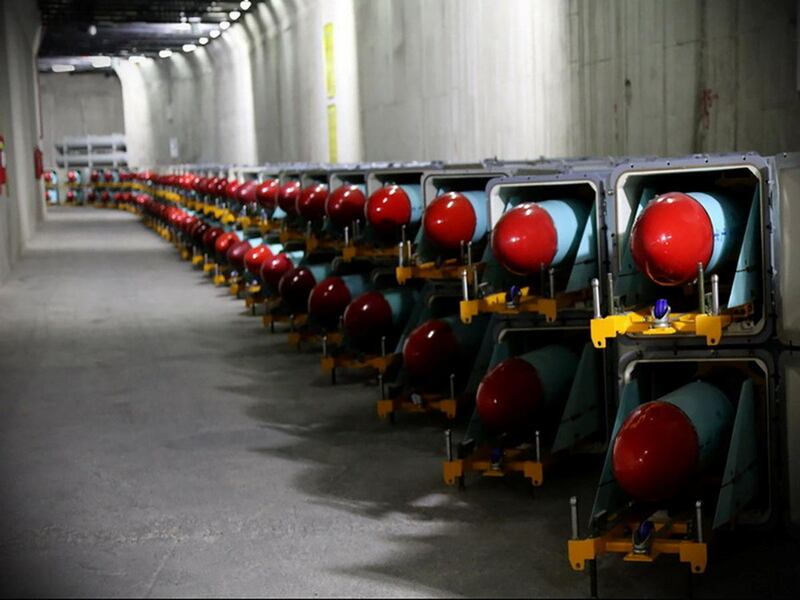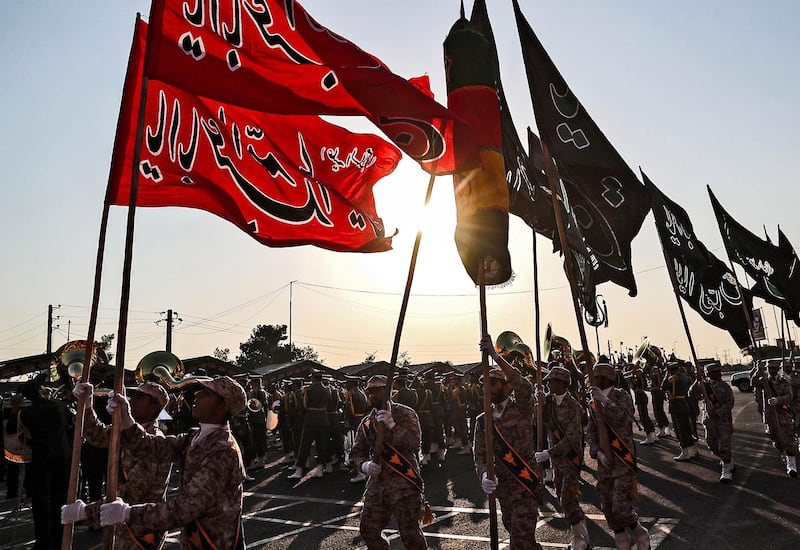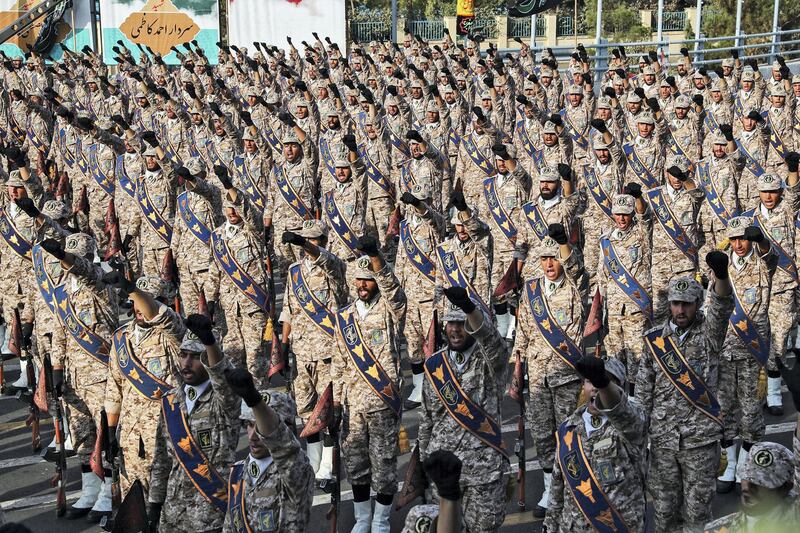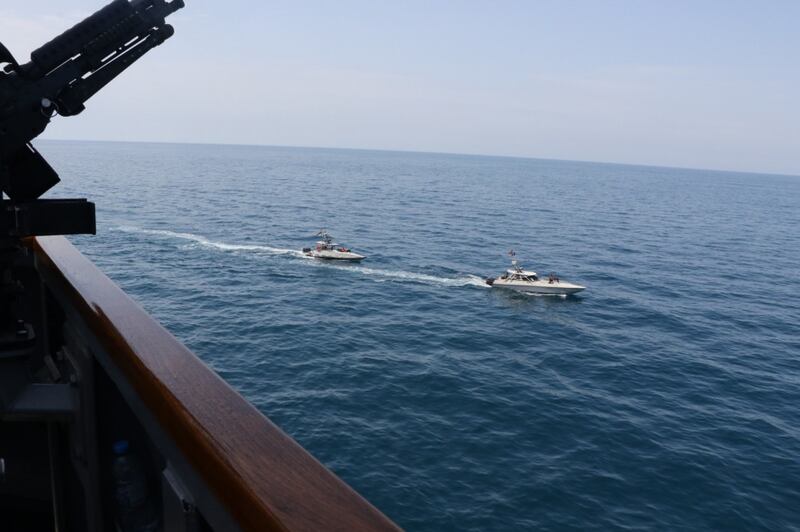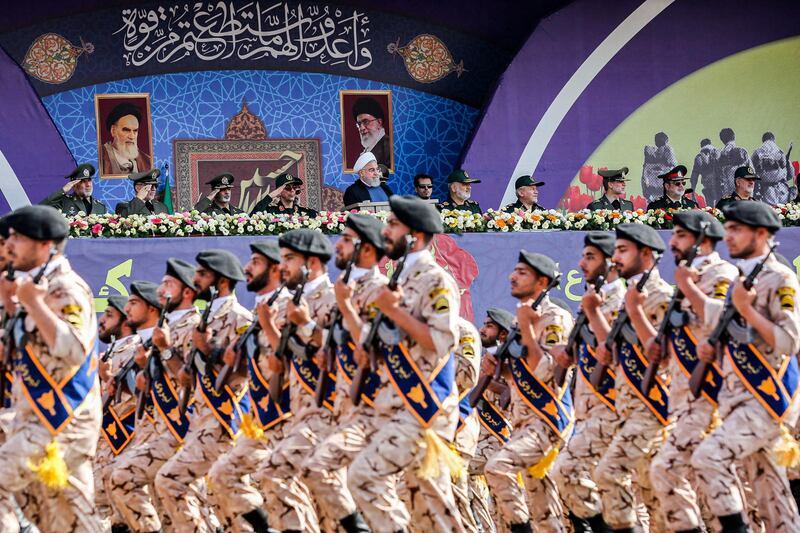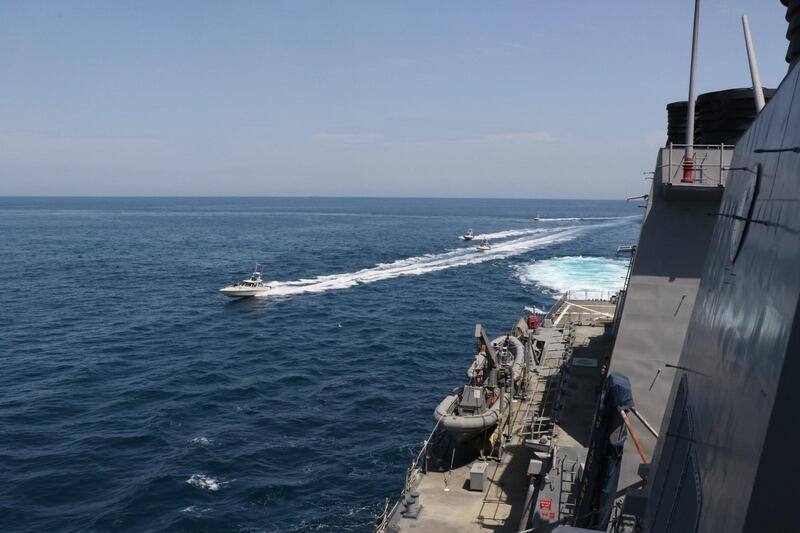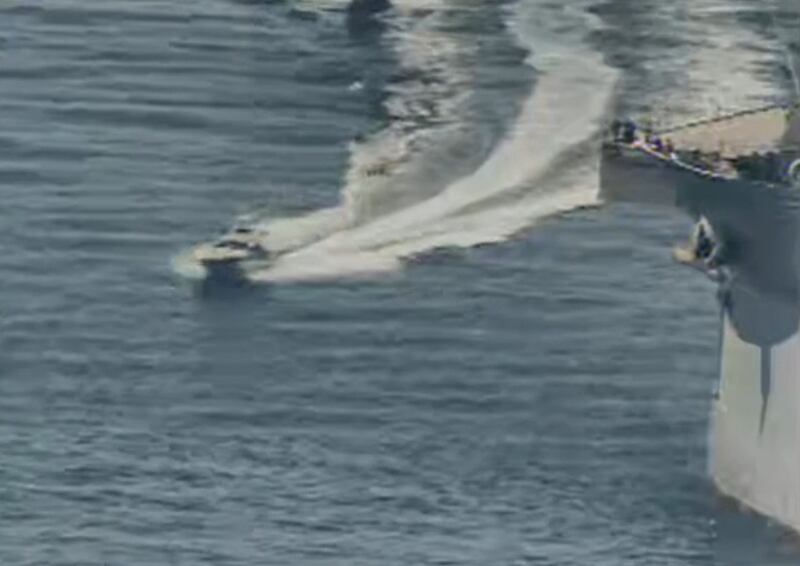Last Tuesday, the Iranian ship MV Saviz was attacked in the Red Sea with what was later revealed to be limpet mines, causing the ship's engine rooms to flood.
Analysts, including those at the US Naval Institute, say the Saviz – contrary to Iranian claims – is used for gathering intelligence in Bab Al Mandeb.
The strait, which lies between the Arabian Peninsula and the Horn of Africa, is one of the world’s busiest shipping routes.
The attack on the Saviz is remarkably similar to other attacks on ships in the region, including one on the Israeli commercial vessel Helios Ray in February and limpet mine attacks on four commercial ships in the Gulf of Oman in May 2019.
Commandos from Iran’s Islamic Revolutionary Guard Corps have been accused of operations against oil cargoes at sea and anchored in port since the administration of former US president Donald Trump withdrew from the 2015 nuclear deal in 2018 and imposed tough sanctions on Tehran.
But as negotiations on a possible new nuclear deal move forward, another conflict has been under way, with Israel and Iran accusing each other of maritime sabotage attacks.
"Saviz is, foremost, a floating armoury ship where armed anti-piracy security guards – in the case of Iran, members of IRGC navy or national navy special forces – disembark from cargo ships and tankers heading for Suez Canal," said Farzin Nadimi, an analyst at the Washington Institute for Near East Policy who specialises in Iran's naval strategy.
“They hand over their weapons, because Suez Canal regulations preclude arms or armed guards aboard civilian vessels using the canal,” he said.
“But its role doesn’t end there and beyond this legitimate role it also collects intel on passing ships, especially naval vessels of hostile nations. It is believed to pass targeting information to Houthis,” Mr Nadimi said, referring to Iran-backed rebels in Yemen.
"They did it at least in 2018 when Houthis were much more active in the sea. It is also believed to have a key role in smuggling personnel into Houthi-controlled areas. Western, Saudi and Israeli intelligence have been monitoring Saviz closely with concern for the past few years."
Bab Al Mandeb chokepoint
The deployment of the Saviz at a maritime chokepoint could be seen as an additional pressure point for Iranian foreign policy, representing the ability to exert leverage on regional enemies.
This is in addition to the Strait of Hormuz, the narrow passage at the mouth of the Arabian Gulf through which ships carried 20 million barrels of oil per day prior to the pandemic.
“The Red Sea, which was secure, is no longer secure for the presence of Americans,” IRGC Quds Force commander Qassem Suleimani said in 2018.
“The Quds force and I are your match. We don’t go to sleep at night before thinking about you.”
Suleimani was assassinated in a US air strike near Baghdad airport in January 2020, after hostility between US forces in Iraq and Iran’s allied militias escalated.
Bab Al Mandeb could be even more important for Iran now, not least because cutting off the Strait of Hormuz has been seen as a last resort for Tehran – perhaps in the event of total war, and even then an economically self-defeating move.
Swarming tactics
The Iranians have long developed a naval strategy focused on “swarms” of lightly armed fast boats, an approach devised to overwhelm the US Navy around the confines of the Strait of Hormuz.
Countering this swarming strategy has been central to the US approach in the narrow waterway ever since a US war-game, Millennium Challenge, in 2002, when a simulated Iranian fleet “defeated” the US Navy, in part by using suicidal small-boat swarms.
Over the years, the US Navy has developed countermeasures to combat the threat, including the Block 1B variant of the Phalanx Close-in Weapons System. The anti-missile system was adapted to be able to pepper small boats with 4,500 rounds of ammunition per minute.
Other weapons systems, from cluster bombs to anti-tank missiles such as the Hellfire, were adapted to be used against small boats.
But the IRGC Navy has also evolved.
“New US approaches have given IRGCN commanders some sleepless nights, but they also have developed their hardware and tactics as well: longer range and more accurate anti-ship missiles – both ballistic and cruise missiles, faster and better armed boats now also armed with missiles with ranges approaching 300km. So no need to swarm,” Mr Nadimi said.
“They’re also developing small submarines, armed drones, both aerial and subsurface drones, complete with thousands – not an exaggeration – of unmanned explosive drone boats, to name a few.”
The damage to the Saviz – whether conducted by Israel, as the Iranians allege, or another regional power, will no doubt have come as a shock to Tehran.
But if recent history is any guide, the IRGC will find other approaches to disrupt global trade for its own political ends.
